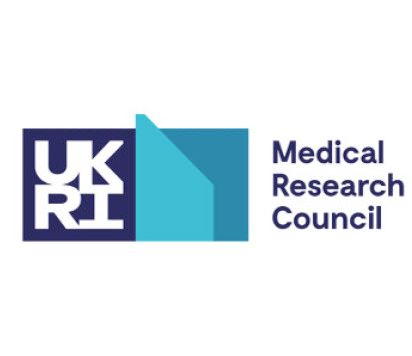Our Publications
Recent publications from the MAP team are highlighted here.
Highlighted publications
See more
Schneegans E, Fancy N, Thomas M, Willumsen N, Matthews PM, Jackson J Omix: A Multi-Omics Integration Pipeline 2023 Sep 01; doi;10.1101/2023.08.30.555486
Fancy N, Willumsen N, Tsartsalis S, Khozoie C, McGarry A, Muirhead RC, et al. Mechanisms contributing to differential genetic risks for trem2 r47h and r62h variants in alzheimer’s disease. 2022 Jul 13; doi:10.1101/2022.07.12.22277509
Smith AM, Davey K, Tsartsalis S, Khozoie C, Fancy N, Tang SS, et al. Diverse human astrocyte and microglial transcriptional responses to alzheimer’s pathology. Acta Neuropathologica. 2021 Nov 12;143(1):75–91. doi:10.1007/s00401-021-02372-6
Murphy AE, Schilder BM, Skene NG. MungeSumstats: A bioconductor package for the standardization and quality control of many GWAS summary statistics. Bioinformatics. 2021 Oct 2;37(23):4593–6. doi:10.1093/bioinformatics/btab665
Khozoie C, Fancy N, Marjaneh MM, Murphy AE, Matthews PM, Skene N. ScFlow: A scalable and reproducible analysis pipeline for single-cell RNA sequencing data. 2021 Aug 16; doi:10.22541/au.162912533.38489960/v1
Qian X, Harris KD, Hauling T, Nicoloutsopoulos D, Muñoz-Manchado AB, Skene N, et al. Probabilistic cell typing enables fine mapping of closely related cell types in situ. Nature Methods. 2019 Nov 18;17(1):101–6. doi:10.1038/s41592-019-0631-4
Jansen PR, Watanabe K, Stringer S, Skene N, Bryois J, Hammerschlag AR, et al. Genome-wide analysis of insomnia in 1,331,010 individuals identifies new risk loci and functional pathways. Nature Genetics. 2019 Feb 25;51(3):394–403. doi:10.1038/s41588-018-0333-3
Hannon E, Marzi SJ, Schalkwyk LS, Mill J. Genetic risk variants for brain disorders are enriched in cortical H3K27AC domains. Molecular Brain. 2019 Jan 28;12(1). doi:10.1186/s13041-019-0429-4
Jansen IE, Savage JE, Watanabe K, Bryois J, Williams DM, Steinberg S, et al. Genome-wide meta-analysis identifies new loci and functional pathways influencing alzheimer’s disease risk. Nature Genetics. 2019 Jan 7;51(3):404–13. doi:10.1038/s41588-018-0311-9
Marzi SJ, Leung SK, Ribarska T, Hannon E, Smith AR, Pishva E, et al. A histone acetylome-wide association study of alzheimer’s disease identifies disease-associated H3K27AC differences in the Entorhinal Cortex. Nature Neuroscience. 2018 Oct 22;21(11):1618–27. doi:10.1038/s41593-018-0253-7
Complementary Studies
- Increasing quantitative and biological understanding of the role of TREM2 in Alzheimer’s disease
- Single nuclear transcriptional signatures of dysfunctional brain vascular homeostasis in Alzheimer’s disease
- The effects of experimental delay on freshly resected tissue for single nuclei transcriptomics
- A single nuclear transcriptomic characterisation of mechanisms responsible for impaired angiogenesis and blood-brain barrier function in AD
One of the strongest risk factors for late onset AD is the loss-of-function (lof) variants in the TREM2 gene2. Understanding the impact of the TREM2 lof variants on gene expression in both disease and non-disease contexts will enable deeper understanding of its biology.
Bulk and single nuclear transcriptomic methods have been used to generate datasets from retrospectively acquired brain tissue from AD and control donors and on a genetically stratified group of donors (TREM2 variant). This study has increased our quantitative and biological understanding of the role of TREM2 in AD. It has combined transcriptomic and lipidomic data with histological and genotyping data from AD and healthy control donors with and without the TREM2 variants. This work is in collaboration with Biogen and summarized in the preprint below.
Brain perfusion and normal blood brain barrier integrity are reduced early in Alzheimer’s disease (AD). We performed single nucleus RNA sequencing of vascular cells isolated from AD and control brains to characterise pathological transcriptional signatures. We found that endothelial cells (EC) are enriched for expression of genes associated with susceptibility to AD. EC transcriptional signatures identified mechanisms for impaired β-amyloid clearance. Evidence for immune activation was found with upregulation of interferon signalling genes in EC and in pericytes (PC). Transcriptional signatures suggested dysregulation of vascular homeostasis and angiogenesis with upregulation of pro-angiogenic signals (HIF1A) and metabolism in EC, but downregulation of homeostatic growth factor pathways (VEGF, EGF, insulin) in EC and PC and of extracellular matrix genes in fibroblasts (FB). Our genomic dissection of vascular cell risk gene enrichment suggests a potentially causal role for EC and defines transcriptional signatures associated with microvascular dysfunction in AD.
Using freshly resected brain tissue from McGill University’s ‘The Neuro’ state-of-the art biobanking platform, this project aims to systematically assess how differing processing techniques (time and temperature) cause artifacts in transcriptional data relevant to interpreting brain autopsy studies. The collaboration between McGill and Imperial UKDRI includes advanced bioinformatics and creates a user-friendly open science website where researchers can deposit their human brain transcriptional datasets and assess to what degree their data may be subject to processing artifacts associated with time and temperature.
View more about our collaborator, Jo Anne Stratton, at McGill University
Brain perfusion and blood-brain barrier (BBB) integrity are reduced early in Alzheimer’s disease (AD). We performed single nucleus RNA sequencing of vascular cells isolated from AD and non-diseased control brains to characterise pathological transcriptional signatures responsible for this. We show that endothelial cells (EC) are enriched for expression of genes associated with susceptibility to AD. Increased β-amyloid is associated with BBB impairment and a dysfunctional angiogenic response related to a failure of increased pro-angiogenic HIF1A to increased VEGFA signalling to EC. This is associated with vascular inflammatory activation, EC senescence and apoptosis. Our genomic dissection of vascular cell risk gene enrichment provides evidence for a role of EC pathology in AD and suggests that reducing vascular inflammatory activation and restoring effective angiogenesis could reduce vascular dysfunction contributing to the genesis or progression of early AD.

